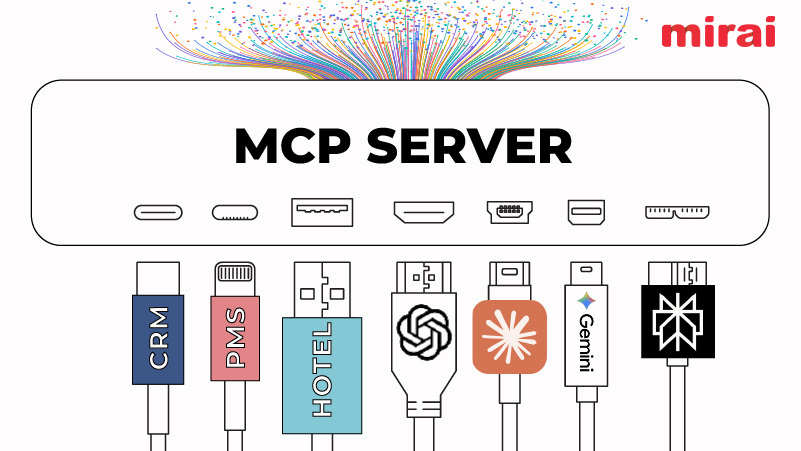
NB: This is an article by Pam Levesque, General Manager of Blue Bay Inn and a Guest Author with Leonardo
When I started working at the Blue Bay Inn in November 2014, I was transitioning from a decade in the corporate retail industry. I wasn’t worried about managing staff, keeping guests happy or maintaining the property – those things I could handle. But I was a little unsure about managing the property’s marketing myself.
In the retail world where I came from, we focused a lot on conversion. Corporations are huge on converting shoppers into buyers – so trying to win over shoppers on my website wasn’t new to me. What was new, however, was managing this all on my own.
As a GM, I’m ultimately responsible to the owners for the bottom line, and I knew my website could be my best conversion tool, but it needed a big makeover. However, given my limited experience in personally managing digital marketing activities, I had to have an inexpensive, easy to use solution that would inform and engage people, convincing them that Blue Bay was the best choice for them. Otherwise I was going to lose the conversion opportunity and all of the business that goes with it.
These are the strategies I implemented that made my direct booking skyrocket.
- Be where your guests are shopping
Booking direct on mobile and social media has proved to be a great way for our guests to book when it’s convenient for them. I find that the convenience factor encourages shoppers to reserve their room on the spot, rather than to put it off for another time.
Before we launched our mobile site, I recognized people were viewing our website on mobile devices, but were quick to leave when they realized our site wasn’t mobile-optimized. Our old website was horrible on a smartphone and so many people would just say ‘forget it’ when they looked at it. Now that it’s optimized, we’re reaching and engaging more travel shoppers – and they’re booking with us!
- Tell your story, your way
I wanted to use my property’s website to show off the unique features of my hotel and its surroundings. Questions like these helped guide me in deciding what content I’d be putting on my website:
- Who are my guests?
- What makes my hotel unique?
- What are people saying about my hotel?
- What would excite and inspire you if you were a travel shopper?
Even the tabs on my website tell a story. Instead of something traditional like “Area Attractions,” we use “See & Do.” I like this page because it helps our guests fall in love with our area – which is one of things that separates the Blue Bay Inn from my competition.
We understand that when guests stay with us, they don’t come and lock themselves in their rooms for the weekend, but rather they want to get out and explore. Just a few blocks away from our hotel is a ferry that will take you from Blue Bay to Manhattan in just 40 minutes, so we highlight that on our website. Focusing on our unique features and amenities communicate an anticipated experience that sets us apart from others in the vicinity.

- A visual-first, easy-to-navigate website is key
When I started working at Blue Bay, we actually had the same website that was built when the property opened 10 years ago, so as you can imagine, it needed an overhaul. The Blue Bay Inn is a beautiful hotel in a great place – but our online presence didn’t showcase that.
One thing that I’ve found since we launched our new site is that our images are incredibly valuable because they tell a story of their own, grabbing the guests’ immediately. The homepage of our website features a photo gallery of our rooms and surrounding area. Travel shoppers don’t have to dig through our pages to get the information they want – it’s right there when they arrive on our homepage. The hospitality industry, like the retail world, is driven by visuals and experiences, so I had to create an emotional connection with shoppers upfront to win them over.
Apart from being visually-appealing, I made sure our site is easy to navigate with a clear path to the booking engine. On www.bluebayinn.com, there’s a ‘book now’ button on every page. If travelers like what they see, I don’t want them to hesitate or have to look around for my booking page, I want them to reserve a room as soon as they find something they like.

Another thing I’ve learned is that our website needed to be painless to manage on the backend too. There was nothing more frustrating than waiting around for a web developer to make a simple change to our website content. I wanted a digital marketing solution that was easy for me to update our special offers, local community events or changes in our multi-media as required.
One of my favorite things to ask our guests is how they found out about us. Most tell us that they discovered our website during their shopping journey and our story convinced them to stay with us. I didn’t have a lot of experience with hospitality online marketing and I certainly wouldn’t call myself tech-savvy, but these are simple strategies anyone can implement to get results at an affordable price. We’re constantly growing our business and our website is one of the major things I have to thank for that.




